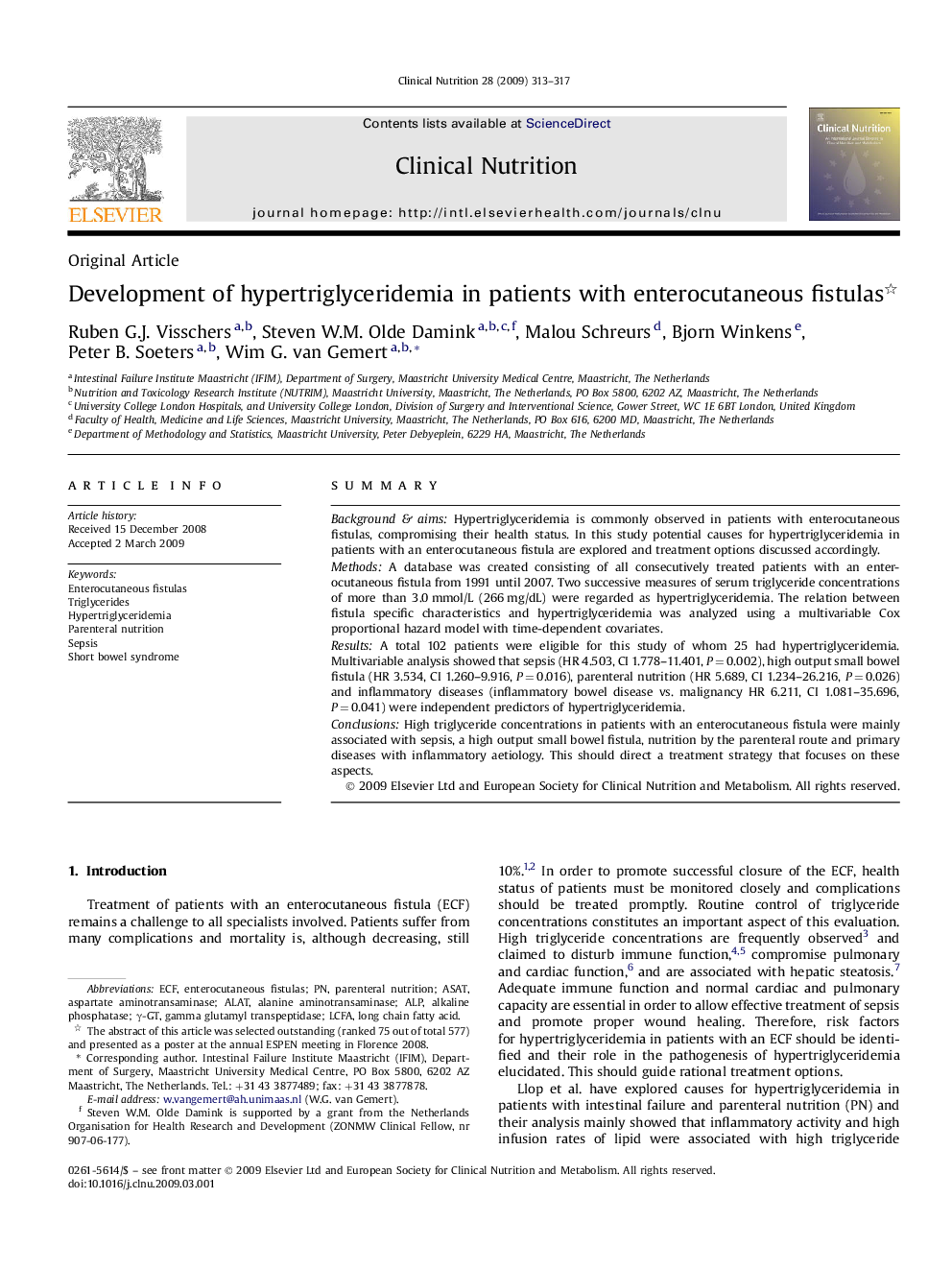| Article ID | Journal | Published Year | Pages | File Type |
|---|---|---|---|---|
| 2688536 | Clinical Nutrition | 2009 | 5 Pages |
SummaryBackground & aimsHypertriglyceridemia is commonly observed in patients with enterocutaneous fistulas, compromising their health status. In this study potential causes for hypertriglyceridemia in patients with an enterocutaneous fistula are explored and treatment options discussed accordingly.MethodsA database was created consisting of all consecutively treated patients with an enterocutaneous fistula from 1991 until 2007. Two successive measures of serum triglyceride concentrations of more than 3.0 mmol/L (266 mg/dL) were regarded as hypertriglyceridemia. The relation between fistula specific characteristics and hypertriglyceridemia was analyzed using a multivariable Cox proportional hazard model with time-dependent covariates.ResultsA total 102 patients were eligible for this study of whom 25 had hypertriglyceridemia. Multivariable analysis showed that sepsis (HR 4.503, CI 1.778–11.401, P = 0.002), high output small bowel fistula (HR 3.534, CI 1.260–9.916, P = 0.016), parenteral nutrition (HR 5.689, CI 1.234–26.216, P = 0.026) and inflammatory diseases (inflammatory bowel disease vs. malignancy HR 6.211, CI 1.081–35.696, P = 0.041) were independent predictors of hypertriglyceridemia.ConclusionsHigh triglyceride concentrations in patients with an enterocutaneous fistula were mainly associated with sepsis, a high output small bowel fistula, nutrition by the parenteral route and primary diseases with inflammatory aetiology. This should direct a treatment strategy that focuses on these aspects.
